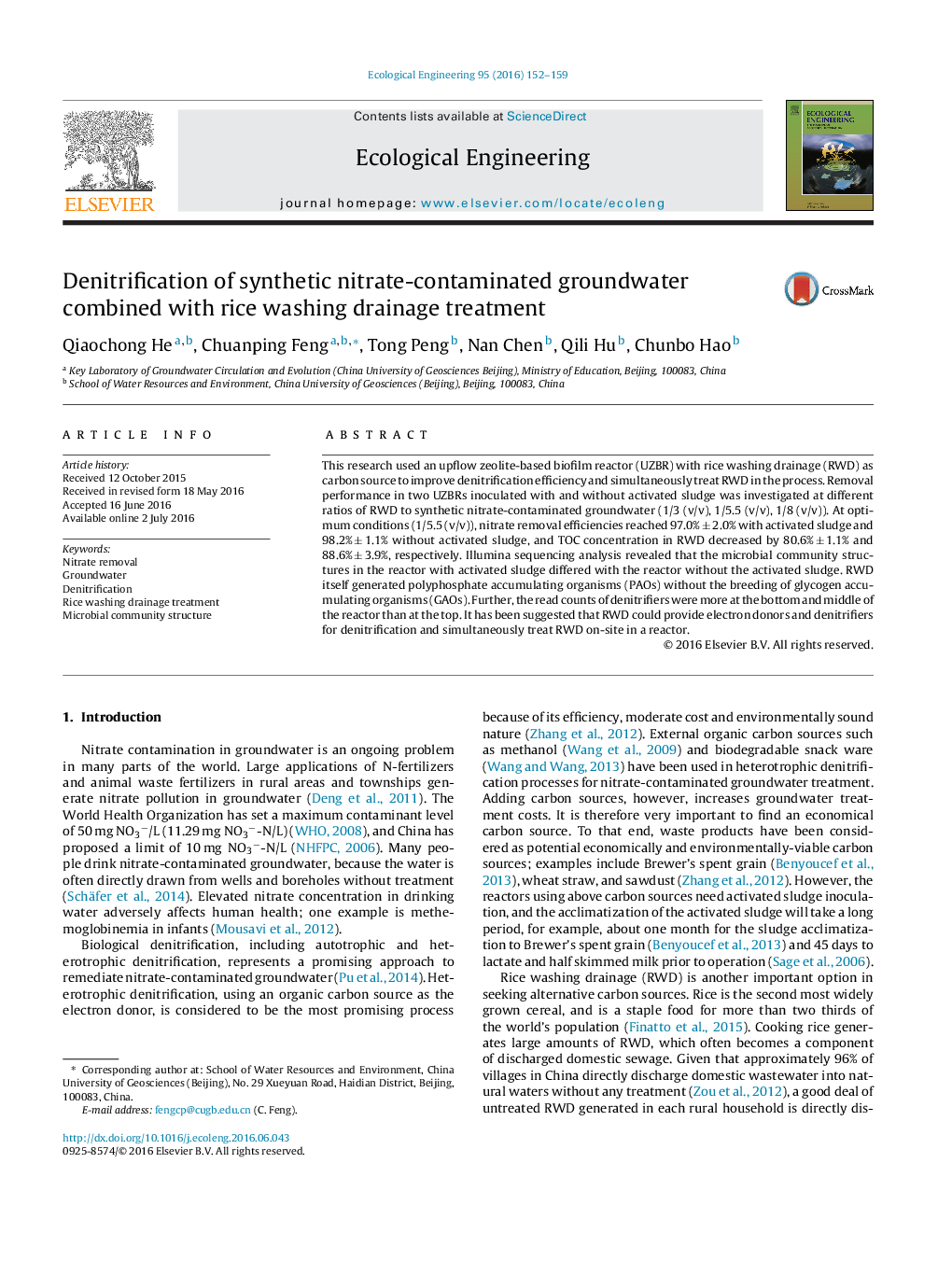| Article ID | Journal | Published Year | Pages | File Type |
|---|---|---|---|---|
| 4388439 | Ecological Engineering | 2016 | 8 Pages |
•Study achieved simultaneous nitrate removal and wastewater treatment in a reactor.•High-throughput sequencing was used to analyze bacterial community structure.•Sulfur-autotrophic denitrifiers could co-exist with heterotrophic denitrifiers.•RWD not only provided electron donors but also denitrifiers for denitrification.
This research used an upflow zeolite-based biofilm reactor (UZBR) with rice washing drainage (RWD) as carbon source to improve denitrification efficiency and simultaneously treat RWD in the process. Removal performance in two UZBRs inoculated with and without activated sludge was investigated at different ratios of RWD to synthetic nitrate-contaminated groundwater (1/3 (v/v), 1/5.5 (v/v), 1/8 (v/v)). At optimum conditions (1/5.5 (v/v)), nitrate removal efficiencies reached 97.0% ± 2.0% with activated sludge and 98.2% ± 1.1% without activated sludge, and TOC concentration in RWD decreased by 80.6% ± 1.1% and 88.6% ± 3.9%, respectively. Illumina sequencing analysis revealed that the microbial community structures in the reactor with activated sludge differed with the reactor without the activated sludge. RWD itself generated polyphosphate accumulating organisms (PAOs) without the breeding of glycogen accumulating organisms (GAOs). Further, the read counts of denitrifiers were more at the bottom and middle of the reactor than at the top. It has been suggested that RWD could provide electron donors and denitrifiers for denitrification and simultaneously treat RWD on-site in a reactor.
